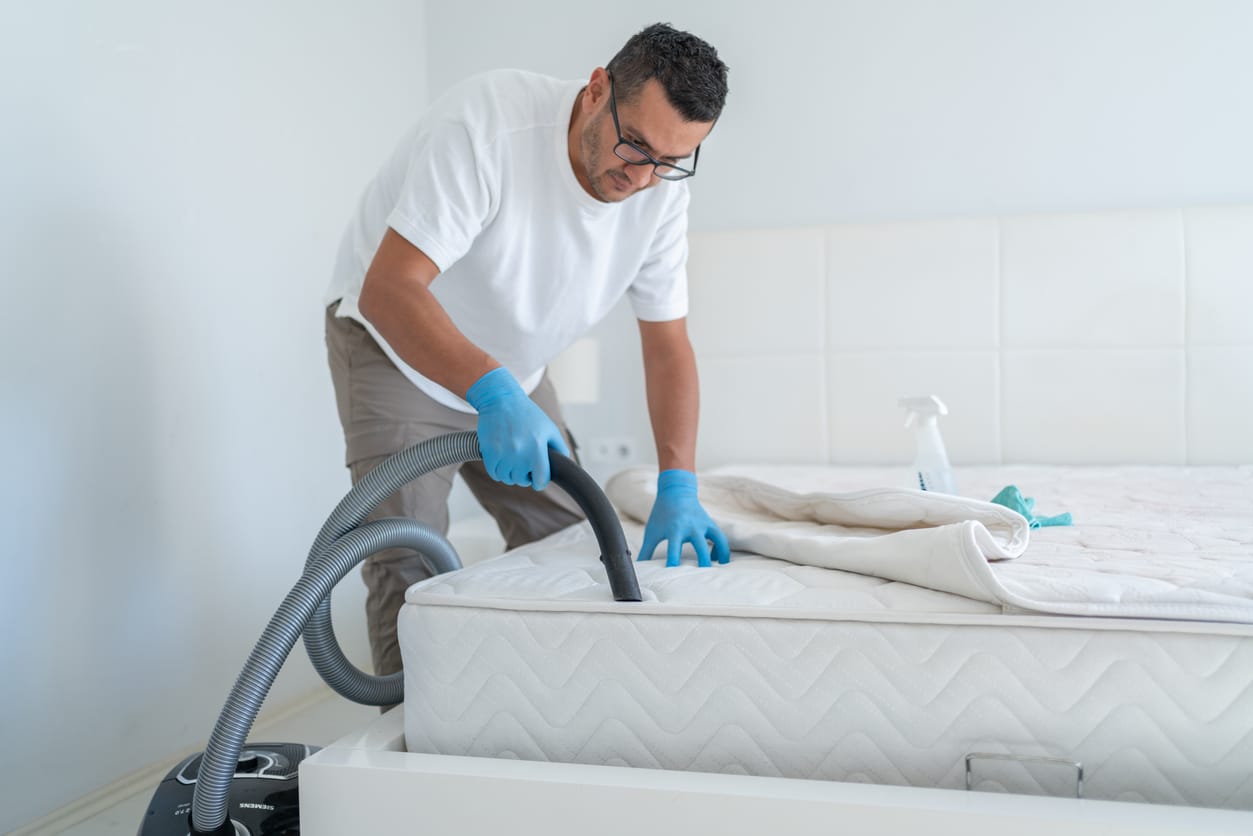Dust mites are microscopic organisms that thrive in household dust. Though invisible to the naked eye, they can trigger allergies in many people. These reactions result from a sensitivity to proteins that dust mites naturally produce throughout their life cycle.
Are Dust Mites in Every Home?

Dust mites appear in nearly all homes, with approximately 80% of homes in the U.S. having dust mites in at least one bed.
What Are the Symptoms of a Dust Mite Allergy?
Common symptoms of a dust mite allergy include:
- Stuffy or runny nose
- Sneezing
- Itchy, watery eyes
- Itchy nose, mouth and throat
- Postnasal drip
- Cough
- Skin rash
If you have asthma, dust mite allergies can also cause difficulty breathing, chest tightness, trouble sleeping and wheezing.
How Can I Minimize Dust Mites in My Bedroom?
There are a few ways you can reduce dust mites in your bedroom:
- Wash bedding. Wash your bedding weekly and your pillows every three to six months to remove dust mite buildup.
- Change your mattress. Mattresses accumulate dust mites, sweat and moisture from the air over time. You can clean a mattress by sprinkling baking soda over the top, letting it sit for about 15 minutes and vacuuming it thoroughly. Unfortunately, while regular vacuuming will help remove some dust mites, you can’t restore a mattress to its original condition. Instead, replace your mattress every seven to 10 years.
- Clean the floors. Vacuum, sweep or mop the floors in your bedroom weekly.
- Wash the curtains. If you have curtains in your bedroom, remove them every month or so and wash them. If they can’t go in the washing machine, try handwashing and air drying them.
- Lower the humidity. St. Peters can get pretty humid, and dust mites stay hydrated by absorbing moisture from the air. Run a dehumidifier in your bedroom to draw out moisture. You should aim to keep your home below 50 percent humidity.
Schedule an Allergy Appointment
If you’ve been dealing with allergy symptoms but aren’t sure if dust mites are the culprit, contact us at Midwest ENT Centre to schedule an allergy test. We can pinpoint the cause of your symptoms and help you find the best way to manage them.